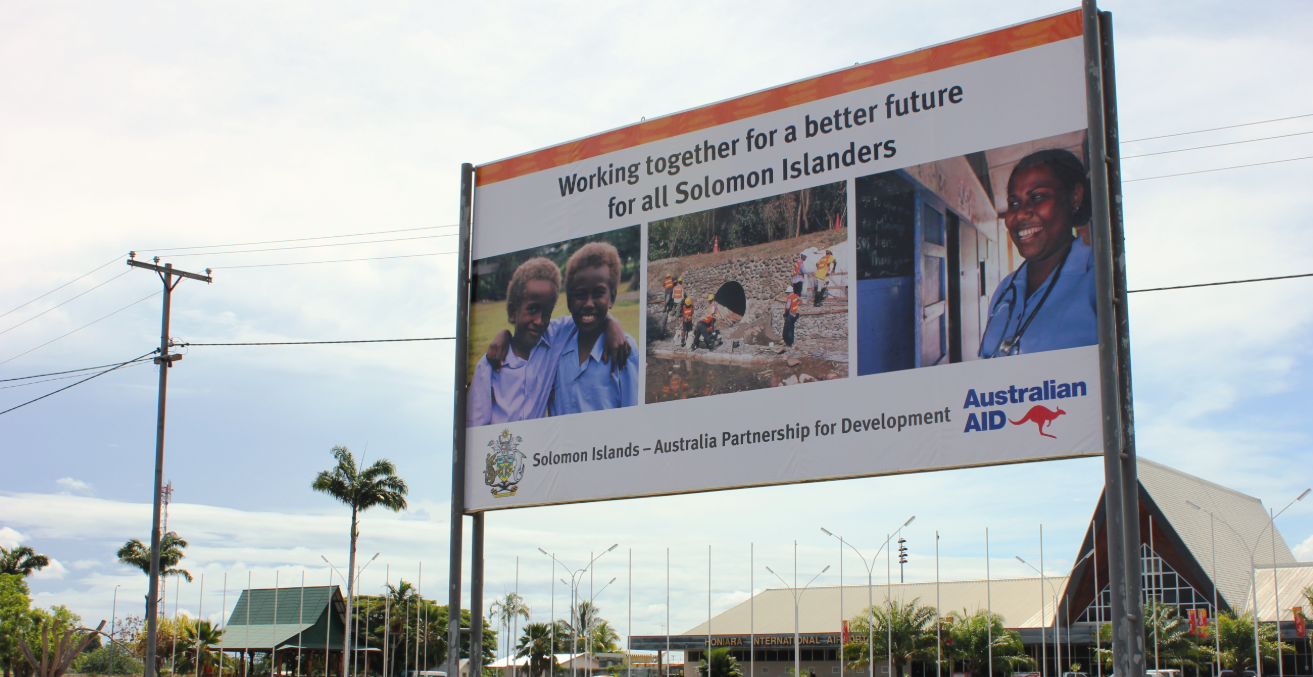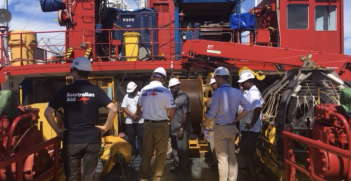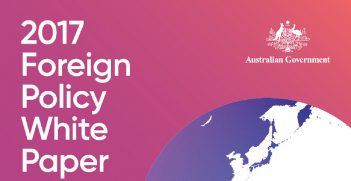Australia’s Foreign Policy in Practice (Part Two)

It seems harder, every year, to predict with any certainty how Australia’s external environment will change. It is necessary to consider how regional trends are impacting Australia’s development partners as it works to implement meaningful development policies.
Trends in the development landscape
The Australian government’s 2017 Foreign Policy White Paper recognised the acute development challenges facing the region, including diverse barriers to sustainable and inclusive growth, persistent poverty and inequality, governance and capability constraints, and natural disasters and climate change. But in the more than two years since then, the region’s development landscape has kept changing.
At the Australasian Aid Conference, Minister for International Development and the Pacific Alex Hawke set out the five salient trends in the Indo-Pacific that the government recognises as influencing development.
First, Australia’s development partners in the Indo-Pacific are hugely diverse – as are the development challenges they face. Indo-Pacific nations vary massively across any number of vectors: population and demographic, geography and territory, and their economy’s size, growth rate, and composition. There are countries much like Australia – and others very dissimilar. And with quickening technological change and greater interdependence, Australia faces increasingly complex challenges that demand cooperative solutions, like economic instability, climate change, terrorism, transnational crime, maritime security, irregular migration, arms control, and rising illiberalism.
All these must be addressed even as Australia deals with the second trend: entrenched development challenges. Australia should celebrate the progress it has helped make happen, especially on poverty reduction. In the last quarter century, over one billion people have been lifted out of poverty – and the global poverty rate is now at its lowest ever point. But we cannot let growth in gross national incomes mask deeply entrenched areas of poverty and inequality. UN figures show that income inequality in the region has risen by more than five percent in the last two decades. Pushing back against this trend is vital to make meaningful progress on the 2030 Agenda and the Sustainable Development Goals.
Third, the region is experiencing profound geostrategic shifts that are affecting Australia’s development partners. The most pronounced shift is the increasingly competitive relationship between the United States and China, playing out in political and economic domains. With the United States changing the way it engages with the world, and the ambitions of a more ideological and assertive China growing with the reach of its influence, the development landscape is inevitably changing. International institutions and the rules and norms that define international political and economic discourse are being questioned for their relevance, fairness, and capacity for reform.
Australia’s development partnerships depend on stable and functioning rules and institutions. Open trade and investment settings are essential for the sustainable growth its development partners need. So while Australia can’t hold back the tide of geopolitical change, it must work to ensure that competition and tension does not detract from its development priorities.
Fourth, new sources of finance, new donors, and the private sector are changing how Australia’s development partners meet their needs. While official development assistance (ODA) will remain central to development, remittances, private capital, and foreign investment are growing. In 2018, total global remittances amounted to 529 billion US dollars, compared to total ODA of just under $150 billion from OECD Development Assistance Committee countries. Australia’s Seasonal Worker and Pacific Labour schemes are an important part of this in the region. Since 2012, it’s estimated that Pacific workers in Australia have sent 385 million Australian dollars back to their families in remittances.
A broader range of finance options and donors is good for Australia’s development partners – it gives greater opportunities for development and growth. Equally, though, Australia needs to help its partners build the capacity to make informed decisions about finance and to steer clear of taking on unsustainable debt burdens. Australia also needs to adapt, making ODA targeted and complementary to the private sector, other donors, and – most importantly – its development partners.
The final trend is that Australia and its development partners will face new and potentially unexpected and disruptive challenges. The novel Coronavirus is such a challenge – one that DFAT’s Indo-Pacific Centre for Health Security is already working on with the World Health Organization and international partners.
Climate change is a more significant and disruptive challenge in the long-term. The extreme weather and long-term changes in the natural environment it precipitates pose significant threats to the region’s development – especially that of the Pacific. This will continue to be a top priority for Australia’s development program, reflected in the government’s five-year, $500 million commitment in 2019 to build climate and disaster resilience.
The government’s new development policy
Amidst this context of change Australia’s development policy must continue to evolve. It must build on the sharpened Indo-Pacific focus and on the overarching strategic framework provided by the White Paper. But Australia must also understand how the region continues to change – and adapt its development program and partnerships accordingly. This is precisely what the government’s new development policy will do.
The Indo-Pacific will naturally remain the predominant focus. Within the region, though, Australia must recognise the great variety of development challenges – a diversity of needs that demands differentiated approaches to the Pacific and Southeast Asia. Throughout both regions, upholding sovereignty and advancing gender equality and women’s economic empowerment will remain imperatives for Australia.
The Pacific is where Australians live – it’s a family of nations which Australia is proud to be part of. Australia has already “stepped-up,” through its $1.4 billion development program in the Pacific – Australia’s largest ever. Australia is building resilience and supporting growth with initiatives, such as the Coral Sea Cable bringing high-speed internet to PNG and Solomon Islands; the Australian Infrastructure Finance Facility for the Pacific, which with $2 billion in funding will support transformative, high-quality projects; and the Pacific Labour Scheme that is already employing more than 800 people from the Pacific in Australia.
Just as important, South East Asia will remain a priority for Australia’s development policy. Australia’s assistance this financial year totals one billion dollars, focussed on building resilience and capacity in partner countries in areas like education, health, agriculture, and poverty reduction. Australia will continue to be a leading contributor when it comes to humanitarian crises in the region. Since 2017, it has provided $160 million in assistance for the crises in Bangladesh and Myanmar. It is also leading on innovative measures, like the new Southeast Asia Economic Governance and Infrastructure Facility that will assist partners to make difficult economic reforms, mobilise finance, and build high-quality infrastructure
The second key priority is that the new development policy will modernise how Australia approaches development partnerships. First, this means re-evaluating and better understanding the challenges and needs of partner governments – and finding more opportunities for collaboration. It also means prioritising the areas where Australia can have the most impact and bring the greatest value.
This feeds into who Australia works with, seeking to align its efforts better with emerging donors like Indonesia and India – and working better with established partners like New Zealand and the EU. This also applies to the private sector and NGOs. Australia wants to foster better relationships with private organisations to harness their expertise and innovation, as well as to leverage new finance. NGOs are also vital partners. Through the Australian NGO Cooperation Program, Australia is partnering with 57 organisations to deliver 450 projects benefitting more than 19 million people.
Australia is also constantly looking to support and leverage the deep personal, community, and cultural connections that it has with the region. Where Australia works is also important for modernising partnerships. Beyond the bilateral, Australia is strongly engaged in the multilateral system, especially at the United Nations, to shape the rules and institutions that influence development in the region.
Australia works collaboratively, creatively, and flexibly with likeminded nations to ensure values are reflected in international rules and institutions. Australia strives for a region that respects international law, where sovereignty prevails, and where strong and resilient architecture helps all states, large and small, to protect their interests. A recent practical example of Australia’s multilateral engagement to advance regional development priorities is the work Australian officials are doing with the WHO in Suva to coordinate the Pacific response to Coronavirus.
The government’s final key priority is that the new development policy works “beyond ODA.” While it will, of course, remain central to Australia’s efforts, ODA should not be the only metric of Australia’s development contribution. So much of what Australia does in the region falls outside the traditional description of development assistance, from security assistance Australian defence and police forces provide in the Pacific to ward off conflict and fragility to efforts to better integrate the region’s economies to boost trade and investment that support sustainable growth.
Australia’s new development policy needs to better align the full gamut of Australian statecraft – diplomacy, trade, defence, education, communities, and commerce – to enhance its development partnerships. A comprehensive view of Australia’s development contribution will allow it to better coordinate all its tools to support stability, grow economies, and build productive infrastructure.
Clare Walsh is the deputy secretary for the Global Cooperation, Development and Partnerships Group with Australia’s Department of Foreign Affairs and Trade. Ms Walsh has a wide range of international and domestic policy experience from her 20 years working in the Australian Public Service. Prior to her current role, she was the deputy head of mission at the Australian Embassy in Japan.
This is part two of a two-part adaptation of the speech Ms Walsh presented to the ACT Branch on 20 February 2020.





